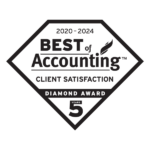Blockchain, the latest buzzword that’s made its way into mainstream media and executive boardrooms alike, is providing real solutions to real world problems.
A digital, distributed (decentralized) and immutable database with seemingly endless application possibilities, the blockchain acts as a digital ledger where past records can’t be altered or falsified, and each new record must be verified across a network of users with no central authority. The solution’s increased transparency and integrity can assist in streamlining the audit process while creating a more efficient means of record. For more detailed explanation of the blockchain technology, see articles here and here.
So how can the blockchain provide solutions to real world problems? Take the recent E. coli romaine lettuce outbreak, for example. Beginning around March 2018, consumers began falling ill, only to later discover that the illness was a result of E. coli on the lettuce they’d purchased. Over 200 people became sick with five recorded deaths. Eventually, the contaminated lettuce was traced back to one of the country’s largest lettuce-growing fields in Arizona, but figuring that out was far from easy.
The question now is: how can produce companies better track product to reduce the risk of contaminated items ending up on the shelf to ensure the safety of consumers without wiping entire inventories when an outbreak is discovered? Walmart found one solution: the blockchain.
The retail giant’s approach is simple: take the existing manual supply chain and put it on the blockchain. Partnering with IBM, Walmart has begun implementing the IBM Food Trust blockchain solution to record and monitor the flow of produce in a digital, traceable, and more transparent supply chain. By September 2019, the company is requiring its lettuce (and spinach) suppliers to upload data to the blockchain, thus providing Walmart with the ability to quickly and easily trace back any contaminated produce directly to the source and only remove those specific items from the shelves, rather than suffering the loss of clearing all produce shelves entirely.
Walmart claims use of the blockchain reduced the trace time from days to mere seconds in some test cases. Of course this has monetary benefit for Walmart, but it also creates a reliable verified transaction log for a significantly quicker and more efficient auditing process, as well as accountability throughout the entire supply chain, all while reducing the risk of another contamination outbreak reaching consumers.
While Walmart’s example is significant, blockchain technology remains a vague and often confusing household discussion. One tech giant, however, is sure to turn the tables: Amazon. The mega-retailer now offers the Amazon Managed Blockchain, which essentially removes the complexity of building and monitoring your own blockchain. Already a trusted name across the ever-expanding list of industries it touches, Amazon presents a simplified means of implementing this disruptive technology without much of the hassle.
With adoption, though, comes new risks for auditors to consider including but certainly not limited to:
- Insufficient privileged user access management
- Lack of Standards and Regulation (e.g. privacy, financial transactions, etc.)
- Inefficiencies or vulnerabilities left during implementation (poor coding)
- Inaccurate or fraudulent data inputs
- Lack of support and integration with third parties
As audit professionals, we need to adapt and educate ourselves to stay on the forefront of change while constantly asking “how we can best serve our clients?”




